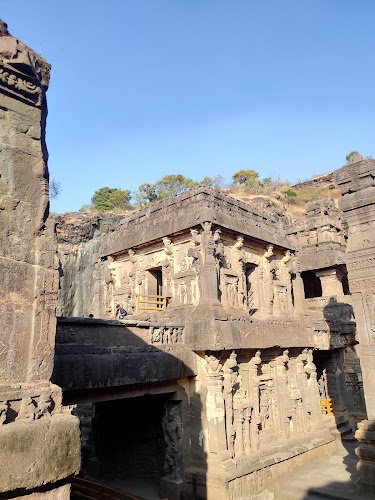
Ellora Caves
Aurangabad, India
- Discover Hindu deities and mythological scenes.
- Explore Buddhist cave monasteries and carvings.
- Learn about ancient Indian art and culture.
- Marvel at the Kailasa Temple's monolithic architecture.
- Observe Jain Tirthankaras and their philosophy.
- Photograph the intricate details of the caves.
Known for:
Description:
Ellora Caves, a UNESCO World Heritage site, represent the epitome of Indian rock-cut architecture. Carved out of the Charanandri hills, the 34 caves comprise Buddhist, Hindu, and Jain temples and monasteries, showcasing religious harmony prevalent in ancient India. The caves, dating back to the 6th to 10th centuries AD, are adorned with intricate carvings and sculptures depicting deities, mythological figures, and scenes from various religious texts. The most famous, Cave 16 (Kailasa Temple), is an astounding monolithic structure carved from a single rock, a testament to the exceptional craftsmanship of the artisans. Visiting Ellora is a journey through art, religion, and history, offering a glimpse into India's rich cultural heritage. Explore the diverse cave complexes and marvel at the artistic brilliance that continues to inspire awe and wonder.
History:
The Ellora Caves were built during the rule of the Kalachuri, Chalukya, and Rashtrakuta dynasties. Construction began around the 6th century AD and continued for over five centuries. Cave 16, the Kailasa Temple, is attributed to the Rashtrakuta king Krishna I (756-773 AD). The caves served as places of worship, meditation, and rest for monks and pilgrims. The coexistence of Buddhist, Hindu, and Jain caves indicates a period of religious tolerance and patronage by different rulers. The caves were gradually abandoned and fell into disrepair until rediscovered in the modern era. Extensive restoration work has been undertaken to preserve these invaluable historical and artistic treasures, ensuring their legacy for future generations.